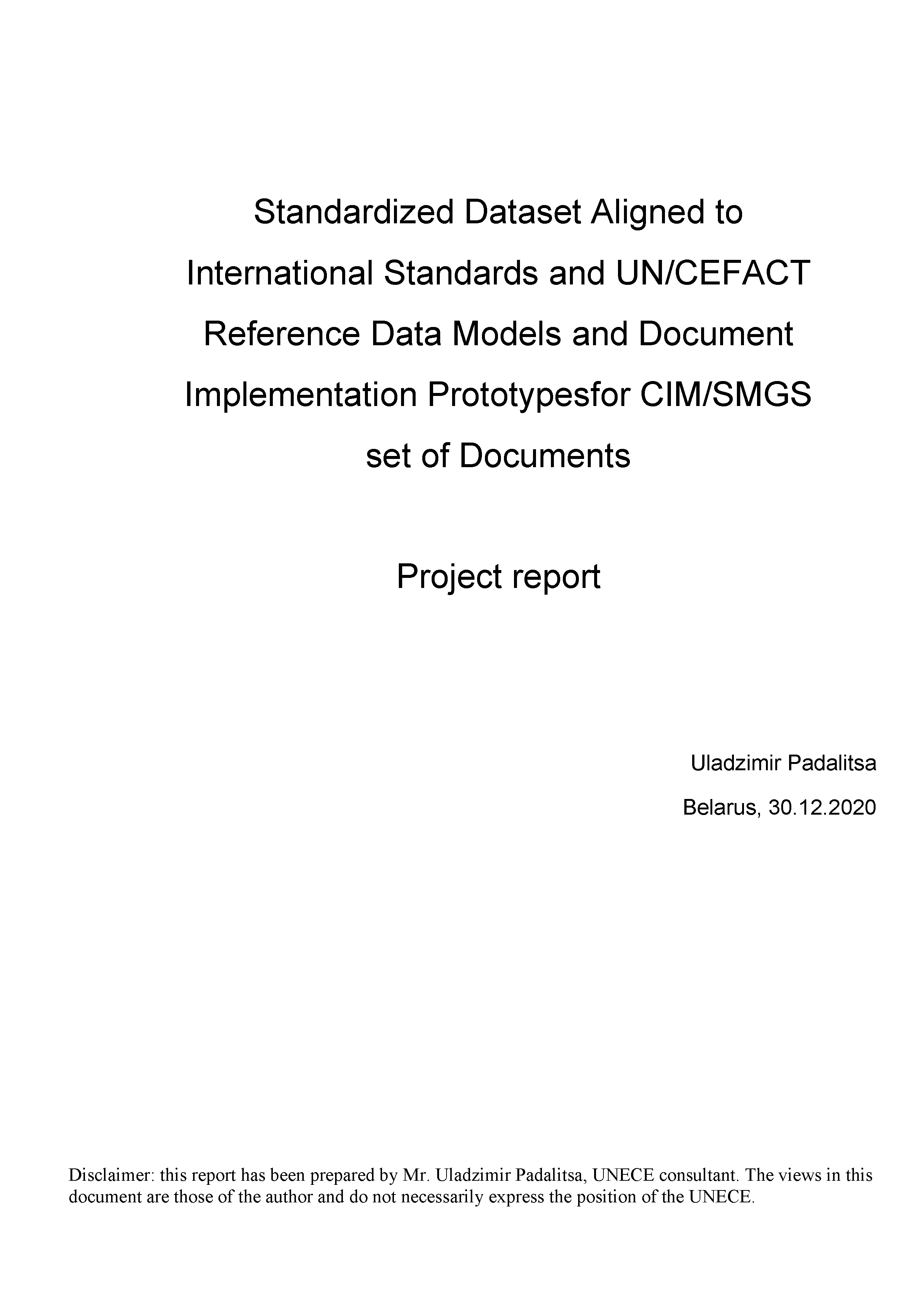
This pilot project was initiated in the context of implementing the recommendations of the 2019 and 2020 UNECE “Odessa seminars” to support the development of digital multimodal transport corridors, to increase the harmonization and standardization of data exchange in international transport, trade and logistics, to encourage electronic data exchange and thereby to reduce person-to-person contacts during the COVID-19 crisis and in the post-pandemic recovery, using relevant UN/CEFACT standards.
This included: an analysis of merchandise and information flows along the Black Sea – Baltic Sea corridor as background information for the further development of the project. A set of electronic messages (electronic document equivalents) based on the UN/CEFACT standards and Reference Data Models, using XML and JSON formats, has been developed in collaboration with relevant UN/CEFACT experts and using their guidance on how the UN/CEFACT standards should be applied to develop electronic document-equivalents for CIM/SMGS documents, in particular:
- Packing List;
- SMGS Consignment Note;
- CIM/SMGS Consignment Note (BY);
- CIM/SMGS Wagon List;
- Invoice for Customs (in cooperation with the Ukrainian consultant in the project).
A survey and analysis took place on what was necessary to accomplish for a complete conversion of data between maritime, road and railway transport. The focus was on new standards for generic document equivalents, in order to look into possibilities for their pilot implementation under the United Nations Development Account (UNDA) coronavirus (COVID-19) response project “Transport and Trade Connectivity in the Age of Pandemics”. The consultant worked in the areas of:
- practical aspects of preparing electronic standards for data exchange and new message structure subsets contextualized to the specific transport modes, using UN/CEFACT standards that would best service digital multimodal corridors and support modern technologies, including XML and JSON;
- development and implementation of a data model for the Black Sea – Baltic Sea digital corridor, combining the data for key documents accompanying goods, as described above, as identified in the project, and based on the UN/CEFACT Multimodal Transport Reference Data Model.
The main objective was to foster the harmonization of electronic data sharing, using global (UN/CEFACT) standards for transport, trade, and logistics, and to prepare templates for electronic document equivalents based on the UN/CEFACT semantic standards and reference data models.
List of Annexes
Annex I. Original documents, used for mappings and conversions
- CIM/SMGS Consignment Note
- SMGS Consignment Note
- Wagon List
- Packing list
- Ocean Bill of Lading – Import
- Combined Transport Bill of Lading – Import
- Non-Negotiable Waybill - Import
- Combined Transport Bill of Lading – Export
- Inland Bill of Lading – Import
Annex II. Results of the mapping
- CIM/SMGS Consignment Note comparison with other documents
- CIM/SMGS
- SMGS
- Wagon list
- Packing list
- Invoice for Customs COVID-19
- Maritime BL_D20A
Annex III. XSD document schemas
Annex IV. XML and JSON documents examples